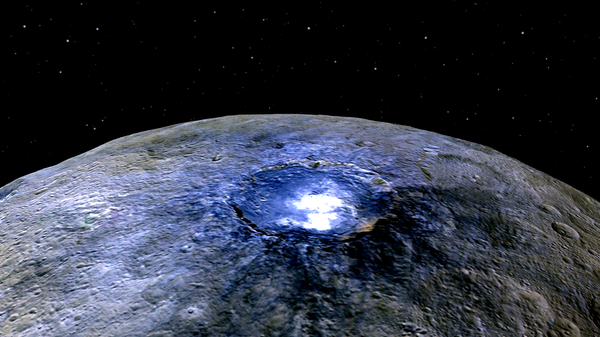A team of researchers with Georgia Institute of Technology (GT) used data from NASA;s Dawn spacecraft, which has been orbiting Ceres since 2015. They found that a shocking number of landslides occur on the dwarf planet, with 20 to 30 percent of its craters either created or elongated by a landslide.
"Landslides cover more area in the poles than at the equator, but most surface processes generally don't care about latitude," said Britney Schmidt, an assistant professor with GT's School of Earth and Atmospheric Sciences, to Phys.org.
Ceres Prank Lands Bart Simpson In Detention For Eternity https://t.co/EO04uUDjzJ pic.twitter.com/MxgmV4YosK
— Fraser Cain (@fcain) April 18, 2017
"That's one reason why we think it's ice affecting the flow processes. There's no other good way to explain why the poles have huge, thick landslides; mid-latitudes have a mixture of sheeted and thick landslides; and low latitudes have just a few."
The landslides have helped the GT team to create a range of how much of Ceres' mantle is ice: 10 to 50 percent. They published their findings in the journal Nature Geoscience.
"These landslides offer us the opportunity to understand what's happening in the upper few kilometers of Ceres," said Georgia Tech Ph.D. student and study co-author Heather Chilton.
Landslides on Ceres reflect hidden ice https://t.co/gaRYJA1wG4 pic.twitter.com/ag66lk1e7J
— Science (@scienmag) April 18, 2017
"It's just kind of fun that we see features on this small planet that remind us of those on the big planets, like Earth and Mars," added Schmidt. "It seems more and more that Ceres is our innermost icy world."
Ceres is the largest object in the asteroid belt between Mars and Jupiter, and one of the five confirmed dwarf planets alongside Pluto, Eris, Haumea, and Makemake. Ceres is the only one not to be located past Neptune. For the second half of the 18th century, it was classified as a planet before being downgraded to an asteroid.
The asteroid, which has a surface area similar to Argentina or Kazakhstan, is believed to have a rocky core and an icy mantle. There may even be an internal ocean of liquid water beneath the ice, as evidenced by the detection of water vapor in 2014.


